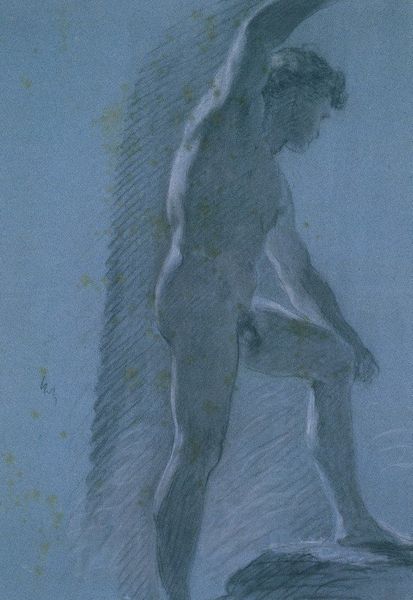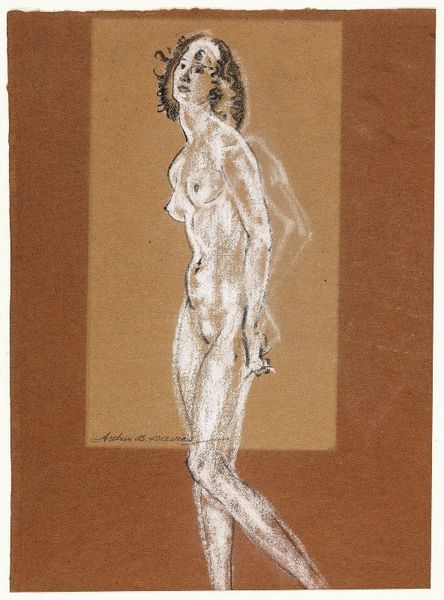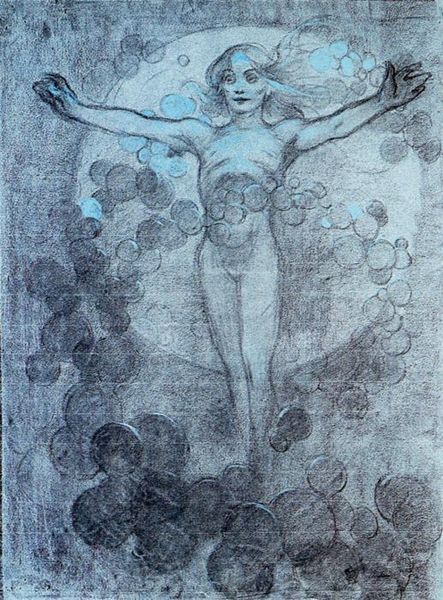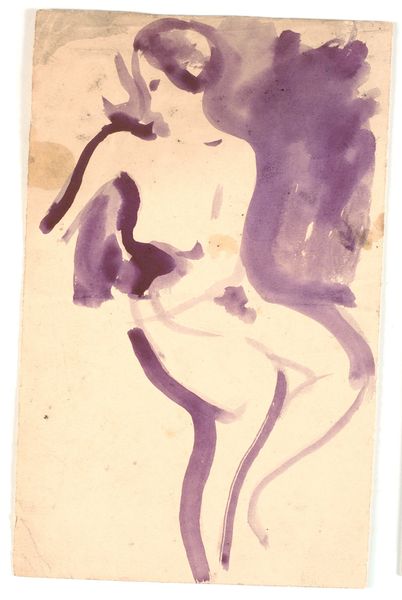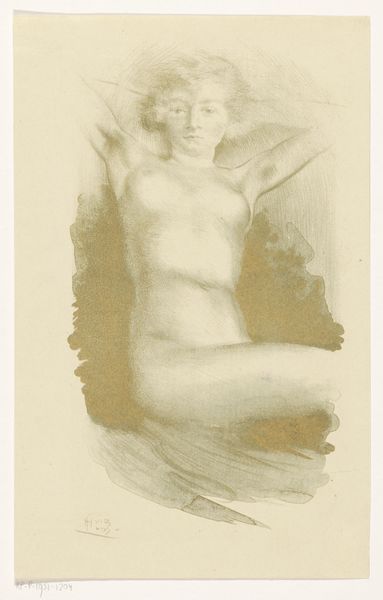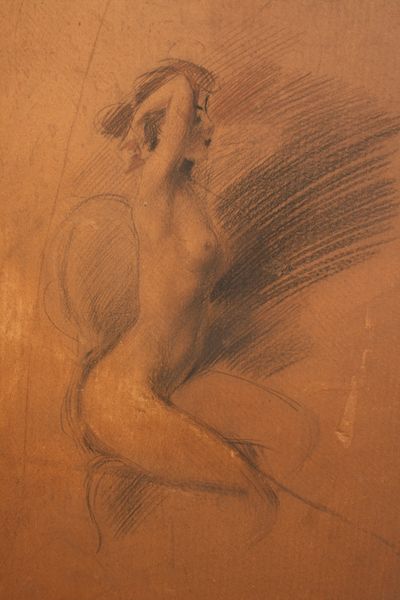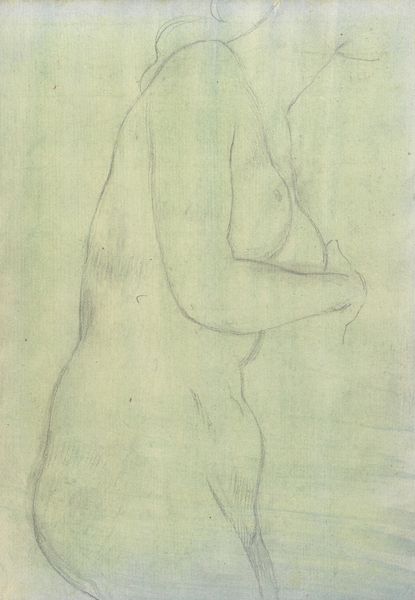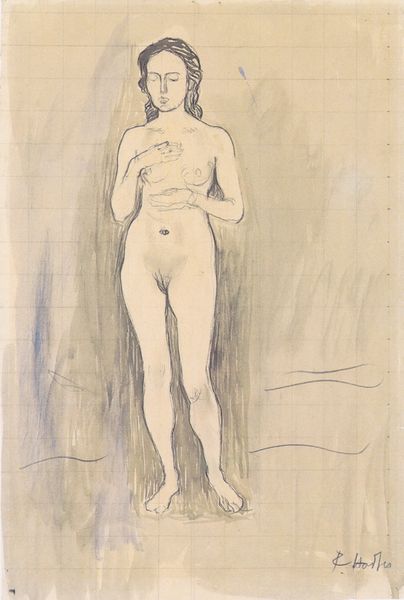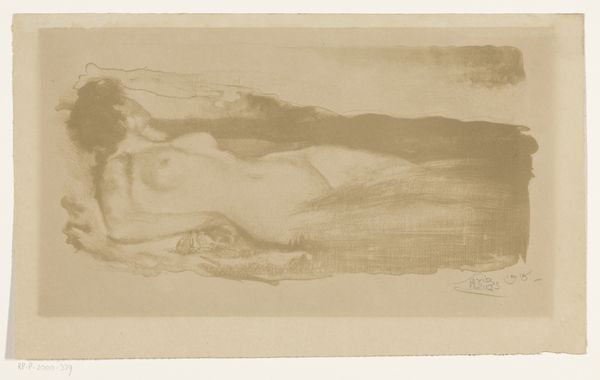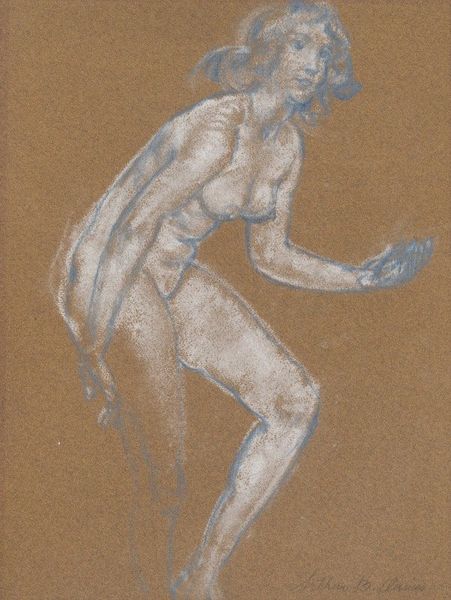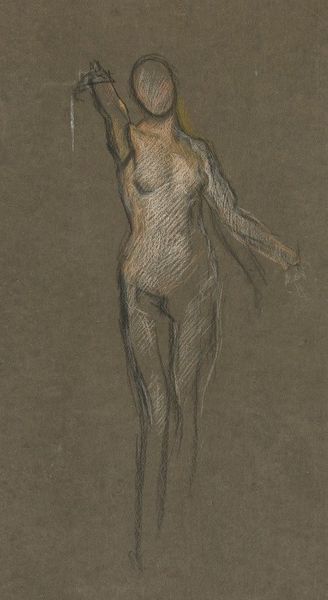
painting, watercolor
#
allegory
#
painting
#
figuration
#
watercolor
#
roman-mythology
#
cupid
#
intimism
#
genre-painting
#
nude
#
watercolor
Copyright: Public domain US
Curator: What strikes me immediately about this piece is its dreamlike quality. There’s an ethereal sense, a muted color palette. Editor: Well, that's a beautiful segue into introducing this early work by Pablo Picasso. Painted in 1905, it’s a watercolor called "Venus and Cupid". Curator: Picasso tackling Roman mythology... What drew him to such a classical subject in his Blue and Rose periods, I wonder? The traditional depictions of Venus are sensual, bold. This rendition feels vulnerable. Editor: The intimacy here, it feels almost defiant against the grand history it’s referencing. Early 20th century European culture was steeped in this classical imagery, part of a broader cultural context. Yet, we are also seeing modern artists starting to rebel against traditional, academic conventions. Picasso's interpretation is quieter, almost internal. There is the pervasive artistic obsession with the nude at that time; how does Picasso speak to that canon? Curator: The materiality of the watercolor adds to that introspection. It doesn't have the grandiose weight of oil painting. And while there's a long history of nude depictions throughout Western art, how the male gaze functions in them…well, here, the Venus feels like she exists outside that dynamic, creating a more self-contained atmosphere. Editor: Precisely, the very loose rendering of Cupid contributes to that intimacy you mention. It feels less about the act of love, more about the internal psyche. How the artist can utilize mythological themes, that everyone will be familiar with, but add a distinct emotional twist. It is the perfect early example. What is truly at play here, regarding cultural assumptions. Curator: A subtle reminder that artistic interpretation constantly renegotiates our shared understanding of familiar themes. Editor: It invites a conversation about those visual legacies... and reminds us that history never simply repeats itself. Instead, we are left questioning existing interpretations and structures.
Comments
No comments
Be the first to comment and join the conversation on the ultimate creative platform.
